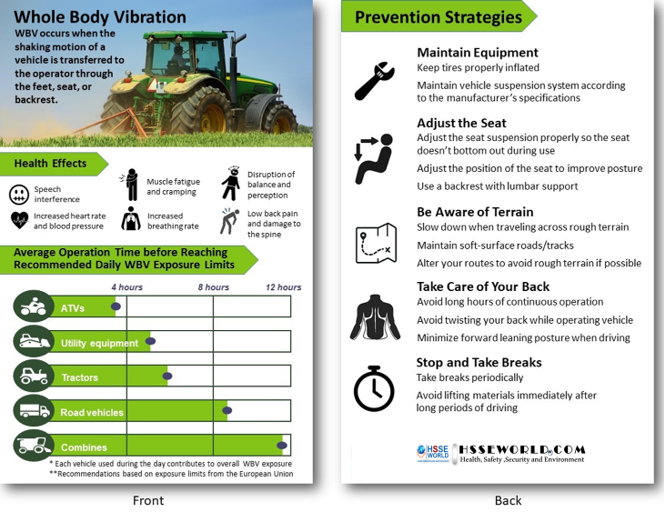Q:What are some of the guidelines around using back support belts in the workplace?
A:According to the Centers for Disease Control and Prevention (CDC), back injuries have a high prevalence in the workplace and cost the economy anywhere from 20 to 50 billion dollars per year. It’s no wonder that health and safety professionals are always on the lookout for a solution to reduce the prevalence and severity of back injuries.The back belt is one of the newer solutions that might help reduce these injuries and its use is increasing in many workplaces.

What Is a Back Belt?
Originally, back belts have been used in medical rehabilitation therapy and are known by a variety of names such as “back support,” “lumbar support belts,” and “weight lifting belts.” The first iteration of the device seems to be the “orthose,” a corset like belt used to provide additional support during injury rehabilitation. The leather belt used by athletes during weight lifting and strongest man competitions seems to be the one that popularized the idea that back belts can help prevent injuries while lifting.
(Lead more in Keys to sustainable Safety and Ergonomics.)
What Does a Back Belt Do?
Back belts are advertised to reduce the forces on the spine during forceful extensions of the back, increase the intra-abdominal pressure, stiffen the body and the spine and reduce loads during lifting or restrict bending motions. Some organizations use back belts as a reminder for their employees to practice safe lifting.
However, at this time, studies are ongoing and there is a lack of consensus about the real benefits of using a back belt and many health and safety organizations (CDC, CCOHS, NIOSH, The Army Office of the Surgeon General, The American Industrial Hygiene Association, Ontario Ministry of Labor, etc.) highlight that a back belt is not considered a personal protection device and that it does not seem to prevent back injuries. As such, most of them say that the decision to wear a back belt is a personal choice. The fact that there are no OSHA guidelines for selection and use of back belts seems to indicate also that at this time OSHA does not consider them to be PPE.
It will take several more years until these studies are complete and a definite answer regarding the utility of the back belt will be offered.
With this in mind we should agree that when used, other safe lifting devices and procedures should complement a back belt: proper body positioning, lifting within your abilities and receiving and following ergonomics training. An employee should not try to “enhance” their lifting abilities by using a back belt.
Using Back Belts
Despite this, the abundance of back belts on the market seems to indicate that some employees, safety professionals, and organizations have already embraced them. The belts come in a variety of materials, sizes and function, such as high vis belts that double up as hi-vis PPE and make it easier to see who is wearing them and who is not.
(Learn about the Three Classes of Safety Visibility Apparel.)
A back belt should come with instructions on how to properly fit the belt, how to put it on and take it off, and how to clean and care for the back belt. Most belts are put on following these steps:
- Position the center of the back belt against your spine and wrap the belt around the back, with the wings against the either side of the torso
- Connect the end of the wings across your abdomen
- Adjust the tightness and pressure in the brace using the tabs on the sides of the belt
It is always a good idea to wear a shirt under the back belt to prevent burns and irritation.
Matt Biss, a training and nutrition specialist, makes the point that a (weight) belt should be used only when necessary, when attempting a lift, and be removed when performing other activities, since it inhibits natural movement. This argument is also supported by the fact that wearing the back belt for prolonged periods of time can lead to muscle weakening and atrophy, since some muscles don’t have to work that hard. This rule holds true for all back belts.
Tighten the belt (but don’t over tighten) for more strenuous activities and loosen it when performing less strenuous activities. Make sure the belt is the proper size for your body, so you can make these adjustments.
Not all belts are the same; some belts are more rigid and might do a better job at protecting your back when lifting, but because of rigidity might inhibit your movement. Other belts are more supple, allowing for better mobility but offering less support. Needless to say, a back belt should be appropriate for the job at hand.
Another rule around the use of belts is to know your limitations. Know how much you can lift (or what are the limits of your corporate policy around lifting) and do not attempt to lift more than that when wearing a belt. While the belt might provide some degree of protection it does not make you Superman or Superwoman.
Follow the rules for safe lifting. Soles firmly planted on the ground, back straight and lift with your knees, not your back. A good belt should keep your back rigid/straight so that should be one less thing to worry about.
Lastly, since the back belts work by creating additional pressure on your body it should be noted that people suffering from high blood pressure should avoid using a back belt because it further increases the blood pressure and can heighten the risk of strokes and heart attacks.



